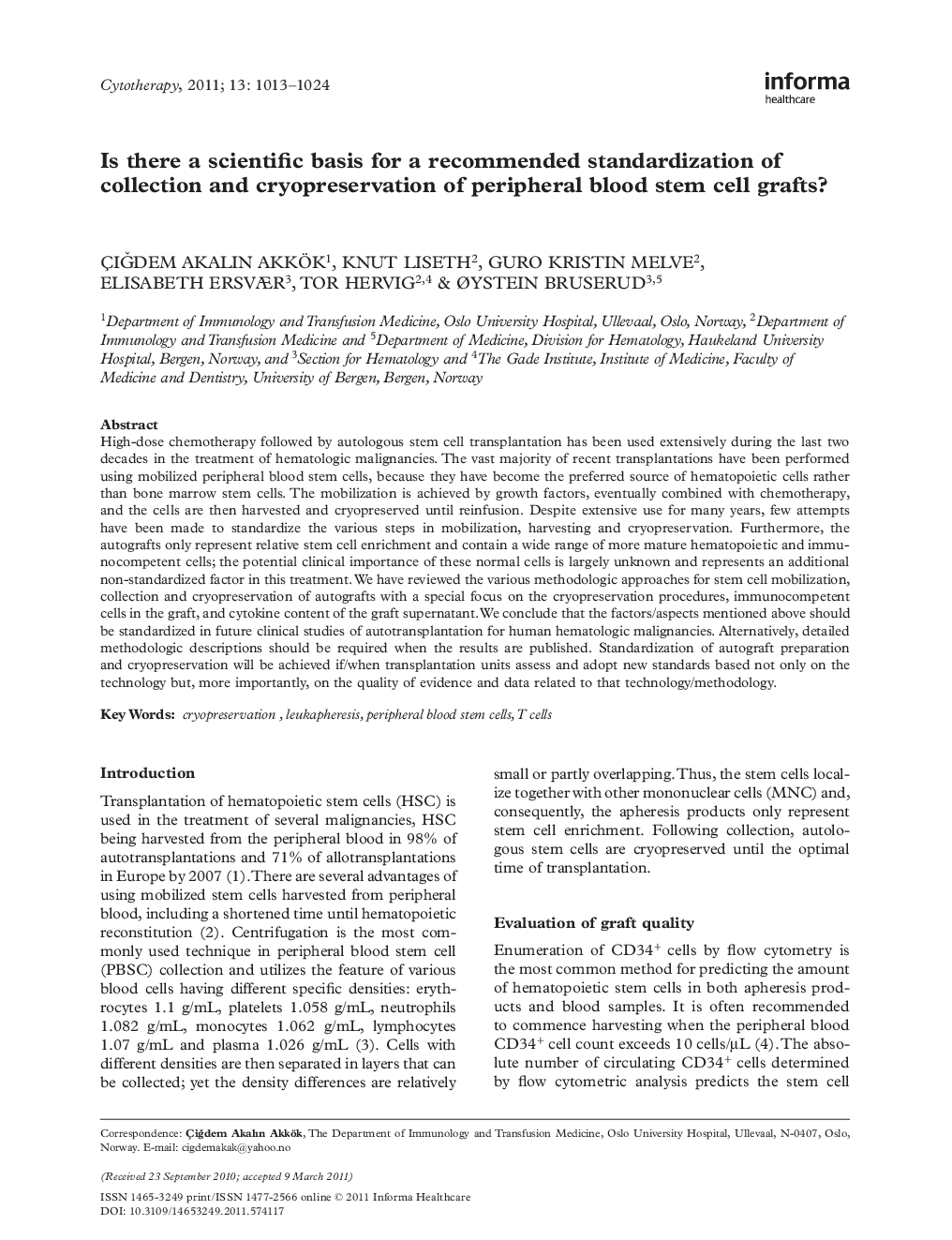| Article ID | Journal | Published Year | Pages | File Type |
|---|---|---|---|---|
| 2172003 | Cytotherapy | 2011 | 12 Pages |
High-dose chemotherapy followed by autologous stem cell transplantation has been used extensively during the last two decades in the treatment of hematologic malignancies. The vast majority of recent transplantations have been performed using mobilized peripheral blood stem cells, because they have become the preferred source of hematopoietic cells rather than bone marrow stem cells. The mobilization is achieved by growth factors, eventually combined with chemotherapy, and the cells are then harvested and cryopreserved until reinfusion. Despite extensive use for many years, few attempts have been made to standardize the various steps in mobilization, harvesting and cryopreservation. Furthermore, the autografts only represent relative stem cell enrichment and contain a wide range of more mature hematopoietic and immunocompetent cells; the potential clinical importance of these normal cells is largely unknown and represents an additional non-standardized factor in this treatment. We have reviewed the various methodologic approaches for stem cell mobilization, collection and cryopreservation of autografts with a special focus on the cryopreservation procedures, immunocompetent cells in the graft, and cytokine content of the graft supernatant. We conclude that the factors/aspects mentioned above should be standardized in future clinical studies of autotransplantation for human hematologic malignancies. Alternatively, detailed methodologic descriptions should be required when the results are published. Standardization of autograft preparation and cryopreservation will be achieved if/when transplantation units assess and adopt new standards based not only on the technology but, more importantly, on the quality of evidence and data related to that technology/methodology.
